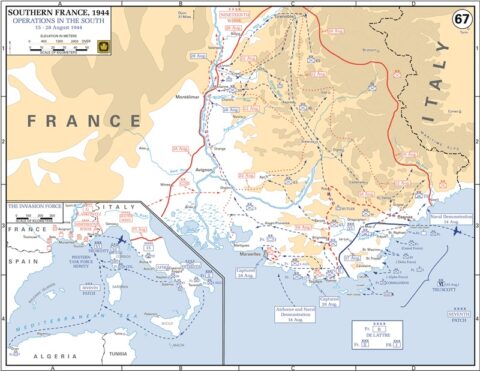World War Two
Published 17 Aug 2024Hirohito broadcasts Japan’s surrender to the world- despite an attempted to coup to prevent it from happening, and much of the world celebrates, but the war isn’t really over. The Soviets are busy invading Manchuria, and there’s revolution in Vietnam and Indonesia.
00:00 Intro
00:22 Recap
00:49 Attempted Coup In Japan
04:12 Hirohito Surrenders
08:54 Japanese Surrender In China
12:05 Soviets In Manchuria
17:52 Revolution In Vietnam
20:33 Summary
21:07 Conclusion
(more…)
August 18, 2024
Hirohito Announces Surrender – War Continues – WW2 – Week 312 – August 17, 1945
A view of the near future – “What if calling someone stupid was illegal?”
Christopher Gage suspects that Lionel Shriver’s new book Mania didn’t require a lot of deep thinking about possible future trends, just a few glances at the headlines in British newspapers would provide all the inspiration necessary:
Lionel Shriver’s novel, Mania, asks “What if calling someone stupid was illegal?”
Set in an alternate timeline eerily flirtatious with our own, Mania depicts a world in which intelligence and competence, those oppressive agents of the modern bête noire — contrast — provoke outraged mobs.
The Mental Parity Movement demands a Khmer-Rouge-style Year Zero. To suggest the existence of differing abilities and competencies is to be “brain-vain”. In this final “great civil rights fight”, stupidity is euphemised as “alternative processing”. The mob cancels Frasier for brain vanity. After regulations prevent Pfizer from hiring qualified scientists, a toxic vaccine lays waste to millions.
The protagonist, a free-thinking academic named Pearson, cancels herself after she adds Dostoevsky’s The Idiot to her class syllabus. But the book is not the offending item. The word “idiot” is illegal. So too, is the “D-Word”. Pearson falls foul of social services after calling her seven-year-old daughter “dumb”. Her daughter grasses her up for this most heinous offence. For her crimes, Pearson endures a mandatory course entitled “Cerebral Acceptance and Semantic Sensitivity”.
Akin to our culture, mass neurosis devours that of Mania. The citizens scour the earth for evidence of the gravest offence: cognitive bigotry.
The Mental Parity Movement even renames “sage” — stripping the haughty herb of its sapiosexual swagger.
Mania imagines a world in which mediocrity is brilliance and where platitude is profundity. I suspect Shriver wasted little time on research. Turning on one’s television furnishes a commonplace book with a bottomless wealth of material.
This week, Harry and Meghan embarked on an unroyal tour of Colombia. On the agenda was a summit on misinformation and online harm. At this “responsible digital future” fandango, the former soap actress and the former royal spermatozoa relayed their fears. Essentially, hordes of toothless oiks with Wi-Fi often say nasty things online.
On stage, Harry adopted the pose of the modern soothsayer. His tieless open collar oozed Sicilian ease.
Speaking in Adverb English, Harry avoided anything as threatening or as harmful as a declarative sentence. Harry talks as if everything is a question as not to arouse predators. The Prince droned on, auditioning the Californication of his mother tongue. The same mother tongue Harry’s ancestors spread around the globe via what some may deign to be less than inclusive methods.
How can I put this in Mania-approved euphemism? Harry is minimally exceptional. Harry is to intelligent thought what lead pipes are to potable water.
.30-06 M1918 American Chauchat – Doughboys Go to France
Forgotten Weapons
Published May 4, 2024When the US entered World War One, the country had a grand total of 1,453 machine guns, split between four different models. This was not a useful inventory to equip even a single division headed for France, and so the US had to look to France for automatic weapons. In June 1917 Springfield Armory tested a French CSRG Chauchat automatic rifle, and found it good enough to inquire about making an American version chambered for the .30-06 cartridge. This happened quickly, and after testing in August 1917, a batch of 25,000 was ordered. Of these, 18,000 were delivered and they were used to arm several divisions of American troops on the Continent.
Unfortunately, the American Chauchat was beset by extraction problems. These have today be traced to incorrectly cut chambers, which were slightly too short and caused stuck cases when the guns got hot. It is unclear exactly what caused the problem, but the result was that most of the guns were restricted to training use (as best we can tell today), and exchanged for French 8mm Chauchats when units deployed to the front. Today, American Chauchats are extremely rare, but also very much underappreciated for their role as significant American WWI small arms.
(more…)
QotD: Cell phones on airplanes
The thought of people being able to use cell phones on airplanes during flight is almost too horrible to contemplate. But I understand why the airlines are considering it: They’ve run out of new ways to make flying unpleasant. Long lines, inexplicable delays, lost baggage, no food, filthy airplanes, unhappy workers (is anyone else worried about planes being flown by despondent pilots who’ve had their pensions stolen from them?) — allowing people to use their cell phones is the only way for the airlines to freshen up the hell they’ve created for us.
Andrew Sullivan, “Terror Cells”, AndrewSullivan.com, 2005-08-09.
August 17, 2024
Forgotten War Ep1 – Witness the Rising Sun
HardThrasher
Published Aug 14, 2024In January 1942 the Japanese Army poured over the border with Burma, and pushed back the Indian and British Armies to the border with Burma. Today we look at how that disaster came about, why and the first phase of the campaign
(more…)
“The notion of a pre-existing Palestinian state is a modern fabrication that ignores the region’s actual history”
Debunking some of the common talking points about the Arab-Israeli conflicts down to the present day:

Arab attacks in May and June 1948.
United States Military Academy Atlas, Link.
Before Israel declared independence in 1948, the region now known as Israel, the West Bank and the Gaza Strip was part of the British Mandate for Palestine, which was established by the League of Nations after the fall of the Ottoman Empire in the First World War.
Under Ottoman rule, the area was divided into various administrative districts, with no distinct political entity known as “Palestine”. The concept of a Palestinian national identity emerged in the 20th century, largely in response to the Zionist movement and increased Jewish immigration in the area.
However, there was never a Palestinian state, flag or anthem. The notion of a pre-existing Palestinian state is a modern fabrication that ignores the region’s actual history.
The modern State of Israel’s legitimacy is rooted in international law and global recognition. On Nov. 29, 1947, the United Nations General Assembly passed Resolution 181, known as the “Partition Plan”, proposing two states — one Jewish and one Arab.
The Jewish community accepted the plan, demonstrating a willingness to compromise for peace. However, the Arab states rejected it, refusing to recognize any Jewish state, and instead launched a military assault on Israel following its declaration of independence on May 14, 1948.
Another pervasive myth is the “Nakba” or “catastrophe”, narrative, which claims that Palestinians were forcibly expelled by Israel in 1948. This version omits the critical context that it was the Arab nations that invaded Israel, causing many Arabs to be expelled or flee their homes.
Rather than absorbing the displaced population, the surrounding Arab countries kept them in refugee camps, using them as pawns to pressure Israel. Organizations like UNRWA perpetuated this situation, keeping Palestinians in limbo rather than encouraging their integration into their host countries. This contrasts sharply with how other refugee populations have been handled, where integration and resettlement are the norm.
The land referred to as “Palestine” has always been inherently Jewish. The Jewish people have maintained a continuous presence there for thousands of years, long before Islam or the Arab conquests.
Caesar Marches on Rome – Historia Civilis Reaction
Vlogging Through History
Published Apr 23, 2024See the original here –
• Caesar Marches on Rome (49 B.C.E.)
See “Caesar Crosses the Rubicon” here –
• Caesar Crosses the Rubicon – Historia…#history #reaction
QotD: Sheep and wool in the ancient and medieval world
Our second fiber, wool, as readers may already be aware, comes from sheep (although goat and horse-hair were used rarely for some applications; we’re going to stick to sheep’s wool here). The coat of a sheep (its fleece) has three kinds of fibers in it: wool, kemp and medullated fibers. Kemp fibers are fairly weak and brittle and won’t accept dye and so are generally undesirable, although some amount of kemp may end up in wool yarn. Likewise, medullated fibers are essentially hair (rather than wool) and lack elasticity. But the wool itself, composed mostly of the protein keratin along with some lipids, is crimped (meaning the fibers are not straight but very bendy, which is very valuable for making fine yarns) and it is also elastic. There are reasons for certain applications to want to leave some of the kemp in a wool yarn that we’ll get to later, but for the most part it is the actual wool fibers that are desirable.
Sheep themselves probably descend from the wild mouflon (Ovis orientalis) native to a belt of uplands bending over the northern edge of the fertile crescent from eastern Turkey through Armenia and Azerbaijan to Iran. The fleeces of these early sheep would have been mostly hair and kemp rather than wool, but by the 4th millennium BC (as early as c. 3700 BC), we see substantial evidence that selective breeding for more wool and thicker coats has begun to produce sheep as we know them. Domestication of course will have taken place quite a bit earlier (selective breeding is slow to produce such changes), perhaps around 10,000 BC in Mesopotamia, spreading to the Indus river valley by 7,000 BC and to southern France by 6,000 BC, while the replacement of many hair breeds of sheep with woolly sheep selectively bred for wool production in Northern Mesopotamia dates to the third century BC.1 That process of selective breeding has produced a wide variety of local breeds of sheep, which can vary based on the sort of wool they produce, but also fitness for local topography and conditions.
As we’ve already seen in our discussion on Steppe logistics, sheep are incredibly useful animals to raise as a herd of sheep can produce meat, milk, wool, hides and (in places where trees are scarce) dung for fuel. They also only require grass to survive and reproduce quickly; sheep gestate for just five months and then reach sexual maturity in just six months, allowing herds of sheep to reproduce to fill a pasture quickly, which is important especially if the intent is not merely to raise the sheep for wool but also for meat and hides. Since we’ve already been over the role that sheep fill in a nomadic, Eurasian context, I am instead going to focus on how sheep are raised in the agrarian context.
While it is possible to raise sheep via ranching (that is, by keeping them on a very large farm with enough pastureland to support them in that one expansive location) and indeed sheep are raised this way today (mostly in the Americas), this isn’t the dominant model for raising sheep in the pre-modern world or even in the modern world. Pre-modern societies generally operated under conditions where good farmland was scarce, so flat expanses of fertile land were likely to already be in use for traditional agriculture and thus unavailable for expansive ranching (though there does seem to be some exception to this in Britain in the late 1300s after the Black Death; the sudden increase in the cost of labor – due to so many of the laborers dying – seems to have incentivized turning farmland over to pasture since raising sheep was more labor efficient even if it was less land efficient and there was suddenly a shortage of labor and a surplus of land). Instead, for reasons we’ve already discussed, pastoralism tends to get pushed out of the best farmland and the areas nearest to towns by more intensive uses of the land like agriculture and horticulture, leaving most of the raising and herding of sheep to be done in the rougher more marginal lands, often in upland regions too rugged for farming but with enough grass to grow. The most common subsistence strategy for using this land is called transhumance.
Transhumant pastoralists are not “true” nomads; they maintain permanent dwellings. However, as the seasons change, the transhumant pastoralists will herd their flocks seasonally between different fixed pastures (typically a summer pasture and a winter pasture). Transhumance can be either vertical (going up or down hills or mountains) or horizontal (pastures at the same altitude are shifted between, to avoid exhausting the grass and sometimes to bring the herds closer to key markets at the appropriate time). In the settled, agrarian zone, vertical transhumance seems to be the most common by far, so that’s what we’re going to focus on, though much of what we’re going to talk about here is also applicable to systems of horizontal transhumance. This strategy could be practiced both over relatively short distances (often with relatively smaller flocks) and over large areas with significant transits (see the maps in this section; often very significant transits) between pastures; my impression is that the latter tends to also involve larger flocks and more workers in the operation. It generally seems to be the case that wool production tended towards the larger scale transhumance. The great advantage of this system is that it allows for disparate marginal (for agriculture) lands to be productively used to raise livestock.
This pattern of transhumant pastoralism has been dominant for a long time – long enough to leave permanent imprints on language. For instance, the Alps got that name from the Old High German alpa, alba meaning which indicated a mountain pasturage. And I should note that the success of this model of pastoralism is clearly conveyed by its durability; transhumant pastoralism is still practiced all over the world today, often in much the same way as it was centuries or millennia ago, with a dash of modern technology to make it a bit easier. That thought may seem strange to many Americans (for whom transhumance tends to seem very odd) but probably much less strange to readers almost anywhere else (including Europe) who may well have observed the continuing cycles of transhumant pastoralism (now often accomplished by moving the flocks by rail or truck rather than on the hoof) in their own countries.
For these pastoralists, home is a permanent dwelling, typically in a village in the valley or low-land area at the foot of the higher ground. That low-land will generally be where the winter pastures are. During the summer season, some of the shepherds – it does not generally require all of them as herds can be moved and watched with relatively few people – will drive the flocks of sheep up to the higher pastures, while the bulk of the population remains in the village below. This process of moving the sheep (or any livestock) over fairly long distances is called droving and such livestock is said to be moved “on the hoof” (assuming it isn’t, as in the modern world, transported by truck or rail). Sheep are fairly docile animals which herd together naturally and so a skilled drover can keep large flock of sheep together on their own, sometimes with the assistance of dogs bred and trained for the purpose, but just as frequently not. While cattle droving, especially in the United States, is often done from horseback, sheep and goats are generally moved with the drovers on foot.
Bret Devereaux, “Collections: Clothing, How Did They Make It? Part I: High Fiber”, A Collection of Unmitigated Pedantry, 2021-03-05.
1. On this, note E. Vila and D. Helmer, “The Expansion of Sheep Herding and the Development of Wool Production in the Ancient Near East” in Wool Economy in the Ancient Near East and the Aegean, eds. C. Breniquet and C. Michel (2014), which has the archaeozoological data).
August 16, 2024
“Operation Dragoon … was described by Adolf Hitler as the worst day of his life”
The “other” D-Day landing in France that few people know much about: Operation Dragoon.
Often referred to as “the other D-Day”, Op Dragoon ran until 14 September 1944 and was a pivotal turning point in the Second World War.
Op Dragoon was a huge and complex operation by land, sea and air that liberated nearly two-thirds of France by linking up with troops from the Normandy invasion on 11 September and pushing the German forces right back to their frontier.
It also secured the ports of Marseilles and Toulon so Allied troops could flood into France.
This was a bitter blow for Hitler, who during conversations with his generals that were discovered in records written in shorthand, said: “The 15th of August was the worst day of my life”.
Dr Peter Caddick-Adams, a military historian and defence analyst, spoke to BFBS Forces News about Operation Dragoon, a largely French/American operation with support from countries including the UK and Canada.
He said: “It set the victory over Germany firmly on its way — and the end of the Second World War couldn’t really have been achieved without Operation Dragoon.
“This is the D-Day that you’ve never heard of.
“Originally there was planned to be two invasions of France on the same day — in Normandy and on the south coast of France along the Riviera.
“It was found that we didn’t have enough landing craft to do both at the same time simultaneously.”
It also didn’t help that Winston Churchill was against the idea and tried to cancel the operation.
The Prime Minister wanted the Italian campaign to remain dominant and was worried Dragoon would take troops and other resources away from Italy.
However, despite his best efforts, the Americans and French prevailed and Operation Dragoon went ahead.
Initially, the operation was given the codename Anvil, because Operation Overlord, the invasion of Normandy, was originally going to be called Sledgehammer.
The plan was for Germany’s armed forces to be smashed between the hammer and the anvil.
Churchill never changed his opinion about the operation despite its eventual success, as Dr Caddick-Adams explained: “At the last minute Churchill had the name changed to Dragoon and, legend has it, because he felt he was being dragooned into an operation that he didn’t want to undertake”.
After the Trump livestream, Elon Musk’s been “charged with coercive chuckling, a legal first”
Chris Bray has been following the legal sideshow of the United Auto Workers union filing charges with the US National Labour Relations Board (NLRB), alleging that Trump and Musk made threats against organized labour during the recent livestreamed event:
The UAW complaints against Tesla and Trump for President 2024 have been listed on the NLRB website. They really did it, and I got it wrong. The delay in listing the complaints, and the lunacy of the charges, led me to the wrong conclusion. The complaints are real: there are forms with vague and obviously ridiculous complaints on them, and they filed the things.
But they’re still functionally fake, and they’ll die quickly. Anti-Trump organizations have been doing this for years, without success; this is the third complaint filed with the NLRB against Trump campaign organizations.
In the first of those previous cases, the NLRB raised the obvious question about jurisdiction, expressing doubt (“without deciding”) that they can police presidential campaigns using labor law:
The NLRB has previously declined to pursue labor complaints against Trump for President, and the UAW has filed a labor complaint against Trump for President. We can make educated guesses about what happens next. I’ve emailed professors who teach labor law to ask them if the National Labor Relations Act governs the political speech of presidential candidates, but they haven’t responded.
As for the complaint against Tesla, Elon Musk had a livestreamed discussion with Donald Trump in which Trump said that striking workers should be fired; Musk laughed, but didn’t say anything in response. This news report includes audio of that exchange. The complaint alleges that Musk therefore made coercive statements
Dining on the luxury liner RMS Lusitania
Rich, creamy banana ice cream with banana compote
City/Region: England
Time Period: 1894Today, the Lusitania is most remembered for being the target of a German torpedo on May 7, 1915, but when she sailed, she was known for being the height of speed and luxury. This ice cream dessert was served to second class passengers on October 9, 1913 on board the Lusitania, and the same dessert is on a menu from April 11, 1912 aboard the Titanic.
It’s not hard to see why Victoria Pudding was served to fancy passengers. The flavors are layered and delicious, the texture is luxurious and creamy, and the compote is undeniably fancy. At first you get the flavor of the banana, then the floral notes from the orange flower water come in, and nothing is overpowering. The banana compote is quite a bit of work, and as it doesn’t add any new flavors to the dish, I think it’d be okay to skip it. If you’re going for maximum opulence, though, then definitely make it.
Victoria Pudding
Pouding à la Victoria
Take one pint of vanilla custard (Book of Ices, p. 23), add to it the purée of six large or eight small raw ripe bananas that have been pounded with one ounce of castor sugar, the pulp of two oranges and one lemon, and a quarter-pound of raw ripe or cooked pineapple; mix these together, and colour with a little of Marshall’s Apricot Yellow, and rub through a fine hair sieve; flavour with a wineglassful of orange-flower water, a teaspoonful of vanilla essence, and a wineglassful of brandy; pour the mixture into the charged freezer and freeze it to the consistency of a thick batter; then add half a pint of whipped cream that is sweetened with half an ounce of castor sugar; refreeze it and put it into a fancy pudding mould, place this in the charged ice cave for three and a half to four hours, during which time turn it occasionally from side to side, so as to get the ice evenly frozen. When ready to serve turn out the pudding in the usual way on to a dish, and serve round it a compote of bananas (see recipe).
This is a nice dish for a dinner or luncheon sweet, and if the mould has a pipe the space made by it can be filled with the compote of fruit.Compote of Bananas
Put two tablespoonfuls of thick apricot jam into a basin with the pulp of two bananas, a wineglassful of Marshall’s Maraschino Syrup, a few drops of Marshall’s Carmine, a saltspoonful of Marshall’s Apricot Yellow, the juice of one lemon and of one orange; mix these together with this purée three or four raw ripe bananas that have been freed from skin and sliced about a quarter of an inch thick; set it on ice till quite cold, then use.
— Fancy Ices by Agnes B. Marshall, 1894
QotD: American football
[F]ootball isn’t really a sport in America. It’s a religion. Almost every single game is played on a Saturday (college) or Sunday (NFL), which, for a Judeo-Christian country, means it’s played on the Sabbath. Accordingly, families come to a standstill when football is on. Tumbleweeds roll through usually busy towns. If anything squares with America’s reputation as a bunch of religious kooks, our faith in football is it.
Jonathan David Morris, “Our National Pastime?”, Libertarian Enterprise, 2005-04-23.
August 15, 2024
“The Establishment … are indifferent to the deaths of the girls, but visibly outraged at protests and calls to end immigration”
Spaceman Spiff risks getting the full power and majesty of the British legal system arrayed against him for offering an opinion critical of the authorities and the ongoing immigration policies of this and previous British governments:
Britain is experiencing civil unrest in response to the recent murders of three young girls at the hands of an individual whose family was allowed to enter Britain from Africa and settle in Wales.
The Establishment response is similar to comparable European states like Ireland or Germany. They are indifferent to the deaths of the girls, but visibly outraged at protests and calls to end immigration.
Vocal rejection of multiculturalism and evidence of its failure in Britain is treated as a hate crime, a subject that cannot be discussed.
This has done nothing to quell discomfort and has done little more than show us Britain’s elites are lost in a bubble that is increasingly divorced from reality.
Mass immigration is deeply unpopular
Immigration has been an issue since the 1950s. Since the 1990s it has featured as one of the key issues in every election, often the top issue for most.
Conversely it has been summarily ignored by the educated classes who run the country. Immigration is here to stay, and Britain must change to accommodate it.
The elite section of society promoting immigration is especially indifferent to those most affected, low wage workers. There is also a strong cultural component beyond the economic arguments, an understanding the drive is to make Britain less white with very vocal attempts to champion non-natives in every area of life.
For many decades the educated classes have viewed notions of patriotism or national loyalty with suspicion. Many fancy themselves as internationalists more in tune with the educated in foreign nations than their working-class compatriots.
Now, after decades of immigration, whole communities have been displaced. Some areas of Britain have no Europeans living there. Some tourists complain parts of London do not look English.
[…]
It is the height of arrogance to believe we can somehow circumvent the wisdom accumulated throughout history. And the price being paid is by the British people who are losing their homeland.
Those behind our utopian schemes are working harder and harder to shore them up. Not just mixing cultures but expensive climate initiatives, radical feminism and fractional reserve banking to name only a few of today’s fads. None of them were ever going to work and now they are obviously failing.
The announcements represent the beginning of the end of bad ideas that were doomed from the start. A sane government would take note and begin a plan to reset Britain starting with listening to concerns about mass immigration.
Instead our ruling elite are digging in, and that will probably mean increased civil disturbance as more and more recognize they have no voice and no say.
Given who we are, who we really are under the political correctness and the good manners, this is absolute insanity on their part. Perhaps just the latest decision in a long line of bad ideas unable to accommodate reality. The distortions within their bubble are strong and they are becoming impossible to hide.
The end is nigh for the believers in Western liberalism.










